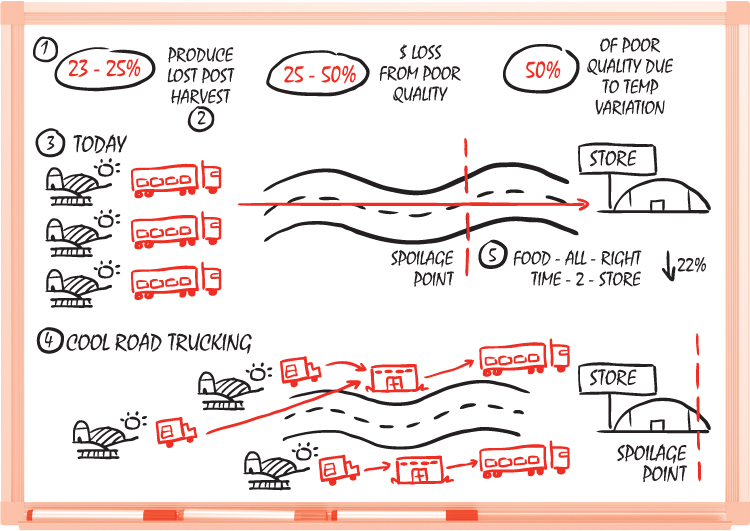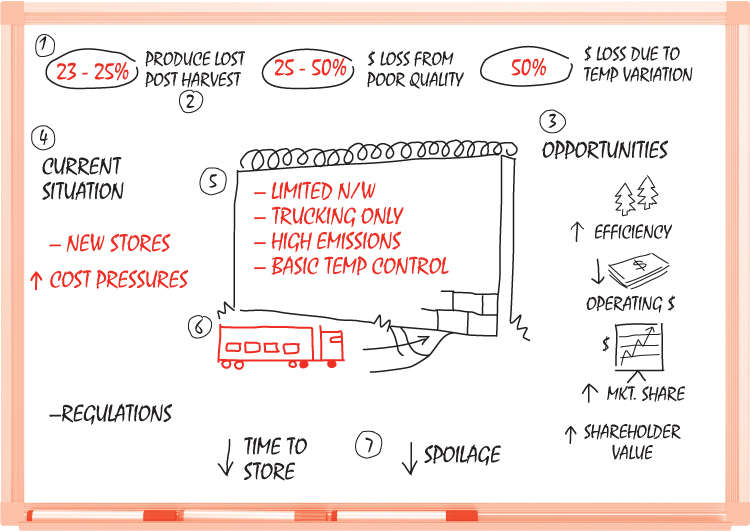Figure 12.1 The Today versus Tomorrow Why Change Whiteboard

Sixty-five percent of decision makers will give their business to the company that “builds the buying vision.” The other 35 percent said they will conduct a fair-and-square bake-off between the top competitors.
—Forrester Research
Let's take a look at the second whiteboard type, the Why Change Whiteboard. In Chapter 11 we discussed the possibility that a prospect may still be a good candidate for your solution or services, even if on the surface they don't meet all of your baseline qualification criteria, as explored using a Qualification and Discovery Whiteboard. The reality is, they don't know what they don't know.
The Why Change Whiteboard is designed to combat your biggest competitor, which isn't what you think it is. It's not your archrival; in fact, it's a more insidious enemy called “no decision” or “the status quo.” According to sales research firm the Sales Benchmark Index, nearly 60 percent of early stage opportunities fall victim to the status quo. These numbers correlate to Forrester's numbers above. If you can't create a buying vision, most prospects will more than likely keep current course and speed, with a minority going the bake-off route and perhaps ending up choosing one of your competitors.
Let's look at these numbers more closely. Even if you did decide a prospect is worthy of next steps after using a Qualification and Discovery Whiteboard, a good portion of those prospects you scheduled follow-up meetings with decided they were okay and didn't need to do anything different by the end of the discussion. You were sure they were at risk or they might be missing something that is negatively impacting their business. After all, why else would they be willing to meet with you?
So how did you manage to convince someone who was concerned their objectives were at risk that they didn't need your—or anyone else's—solution? More than likely, you came in with your typical “why us” company and product-centric sales messaging too early, and they weren't ready to hear about it. It could have been slides, or even a Solution Whiteboard, used prematurely. The reality is that the majority of the prospects you meet with are still asking themselves, “Why change?” and “Why now?” They live in their story, but you insist on telling them your story too soon.
Breaking through the status quo is like breaking a habit. Your brain goes on autopilot when a habit is formed. And the part of the brain that makes decisions to change literally goes to sleep. In order to disrupt this habit (the status quo) and reconsider your current approach, you have to wake up this part of the brain where decisions to change are actually made.
It's called the Old Brain (sometimes referred to as the primal brain or lizard brain), designed to ensure your survival. If your Old Brain senses your survival is in jeopardy, or your current situation is unsafe, it causes you to react and move away from the potential threat and seek a “new safe.” Your first job is to make sure that your prospect's Old Brain is activated and involved in your presentation, so it's good to know what stimulates the Old Brain.
As a survival mechanism, the Old Brain is more motivated to move away from pain than it is to move toward gain. It is more adaptive and emotional than rational. Whiteboard visuals are a great way to introduce a threat, challenge, problem, potential missed opportunity, or unmet obligation, and create a visceral reaction in your prospect that their desired outcome is at risk.
The Old Brain doesn't have the capacity for language. It performs at a very basic, nearly instinctual level. So the key is to present a scenario that motivates the Old Brain to reconsider its current state. Why Change Whiteboards need to be simple but hard-hitting and show clear contrast—the Old Brain craves contrast to make a distinction. You can't just show your proposed new way of doing things; your approach needs to be presented in the context of why the old way no longer works. Again, whiteboard visuals are a great way to demonstrate clear contrast between why the old is bad and the new is good. The ability of your prospect to perceive value and make a decision lies in this contrast.
Why Change Whiteboards create enough status quo disruption that your prospect has to question their current approach and consider doing something different. If you use it right, this type of whiteboard can help unhinge the incumbent product, service, or process before plunging into your Why Us? Solution Whiteboards, which prematurely elaborate on you, your products, and services.
Let's take a close look at the Today versus Tomorrow Why Change Whiteboard using the Cool Road Trucking case study:
Figure 12.1 The Today versus Tomorrow Why Change Whiteboard

ACTIVITY—Complete a Today versus Tomorrow Why Change Whiteboard for a Current Prospect


You will note that this whiteboard has a series of defined movements designed to provoke the prospect by showing how his or her status quo is unsafe and guide the conversation to your recommended “new safe.”
Let's look at another variant of a Why Change Whiteboard, The Wall. The concept is simple: show how a prospect's current situation cannot traverse a set of typical challenges to fully realize opportunities and stated objectives.
Figure 12.2 The Wall Why Change Whiteboard

By now, your prospect is hopefully convinced they need to take a different approach—they want to change. But now they'll want to know how you will assist them in breaking through the status quo and grasping their opportunities, and why you are the best vendor to help them do it. That is achieved using a Solution Whiteboard, examples of which we will introduce in the next chapter.